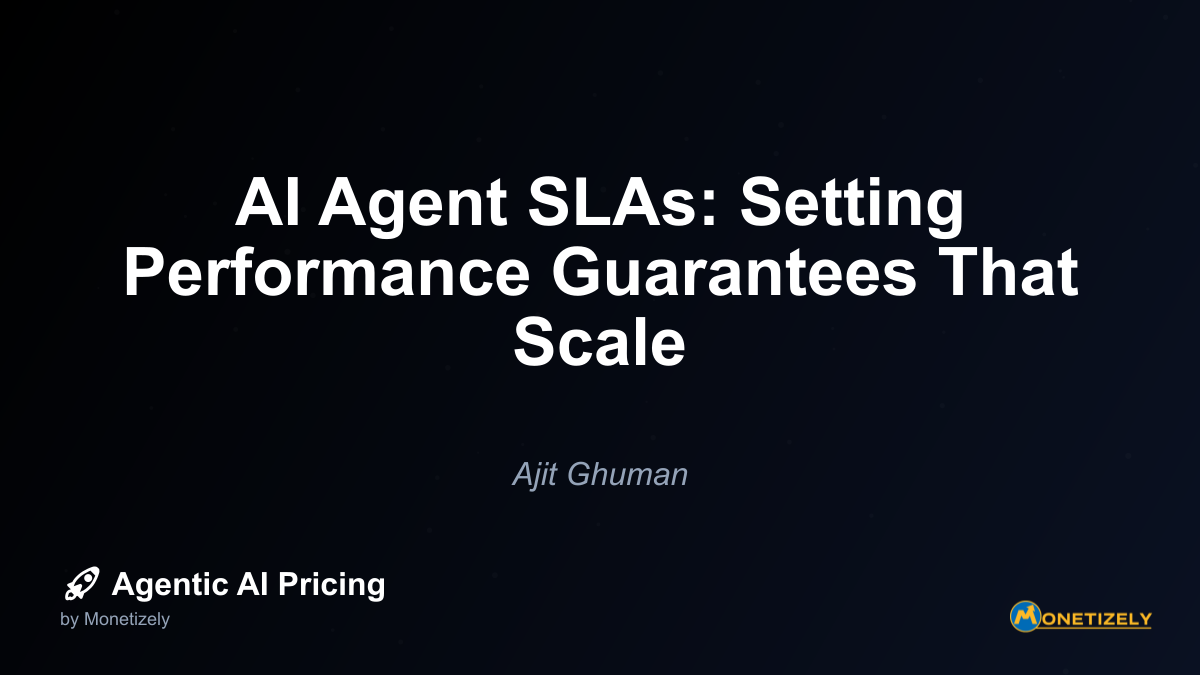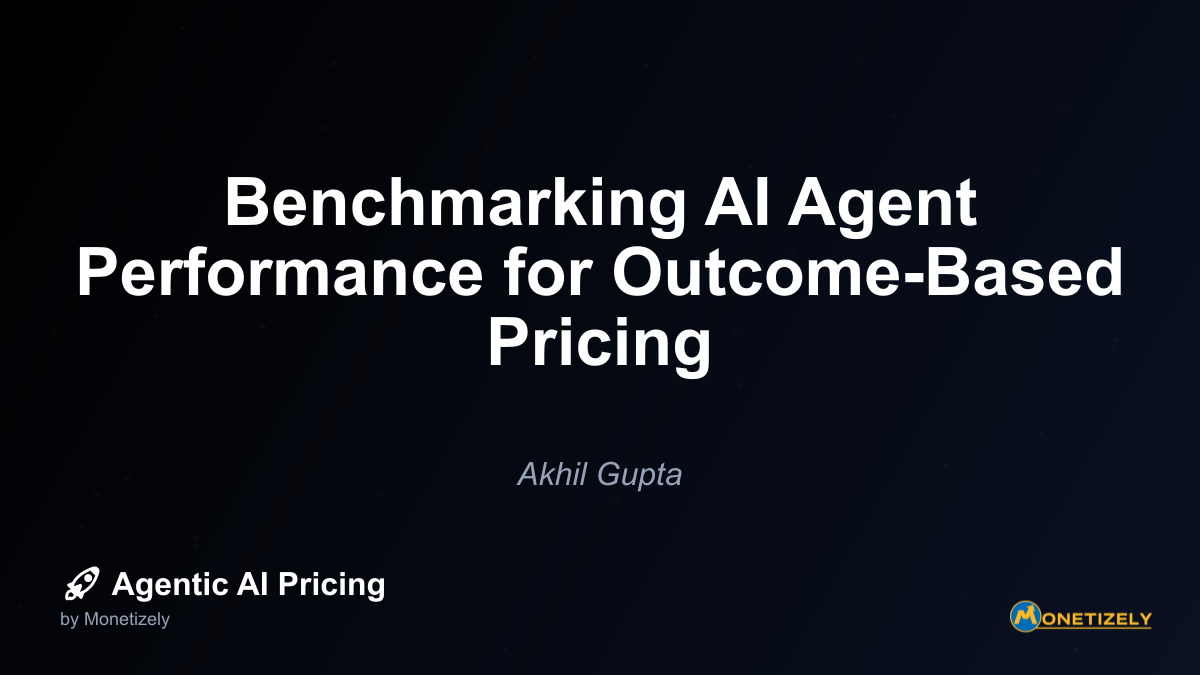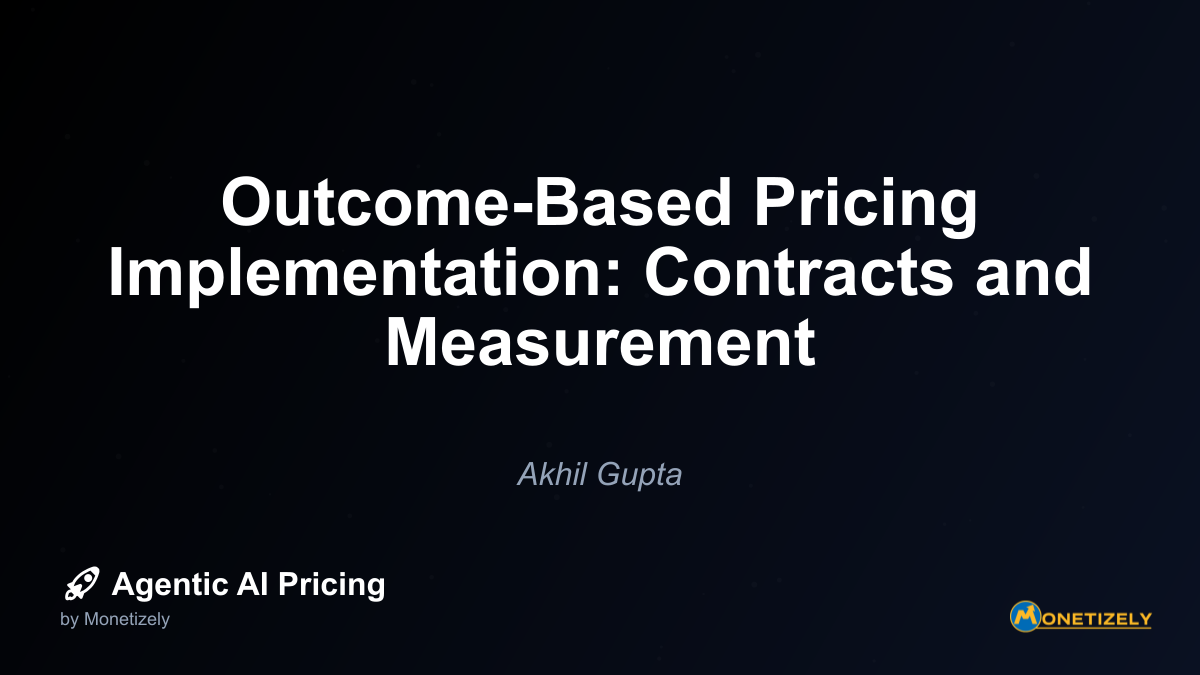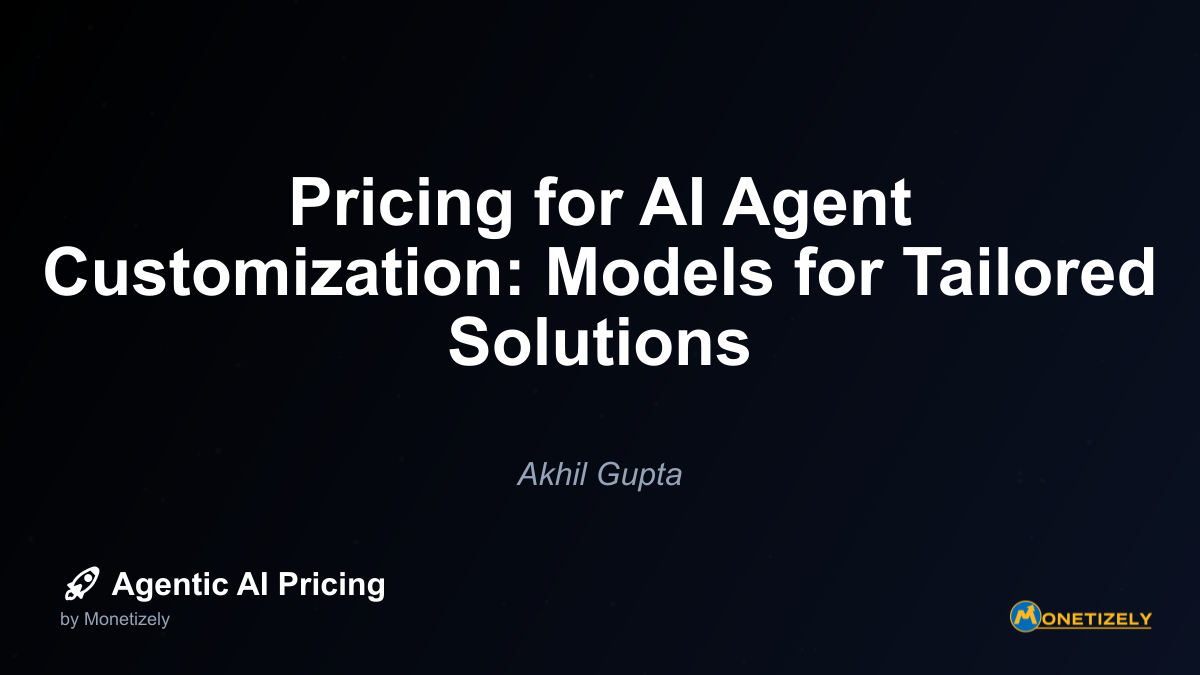· Akhil Gupta · Implementation · 12 min read
The Role of Professional Services in AI Solution Pricing
AI and SaaS Pricing Masterclass
Learn the art of strategic pricing directly from industry experts. Our comprehensive course provides frameworks and methodologies for optimizing your pricing strategy in the evolving AI landscape. Earn a professional certification that can be imported directly to your LinkedIn profile.
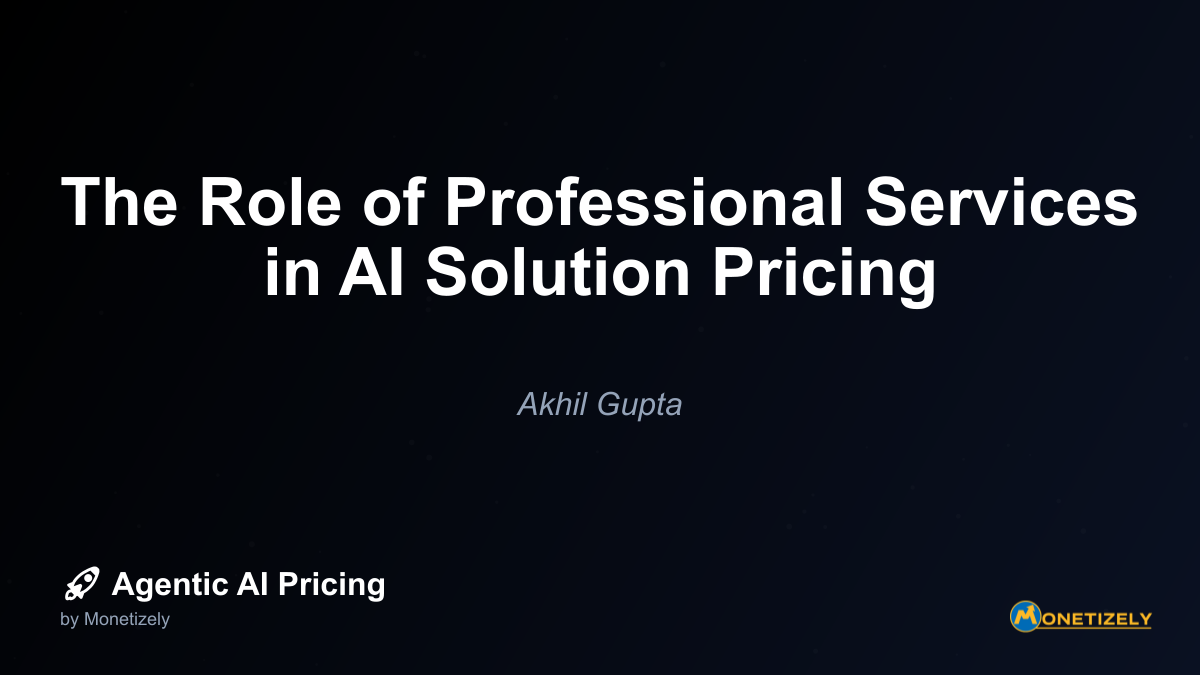
In the rapidly evolving landscape of AI solutions, professional services have emerged as a critical component of successful implementation and adoption. While much attention is focused on AI product pricing, the accompanying services—implementation, customization, and ongoing support—often represent a substantial portion of the total cost of ownership and significantly impact the realized value of AI investments.
The Strategic Importance of Professional Services in AI Solution Delivery
The complexity of AI technologies necessitates specialized expertise for successful deployment. According to recent market research, infrastructure costs represent the top growth constraint for 67% of AI companies, with gross margins averaging just 50-60%—significantly lower than the 80-90% typically seen in traditional SaaS businesses. This cost structure reality is reshaping how vendors approach service delivery and pricing.
Professional services for AI solutions typically encompass several key areas:
- Data preparation and integration
- Model customization and fine-tuning
- Solution deployment and implementation
- Ongoing maintenance and optimization
- Training and enablement
Each service component addresses specific challenges in the AI implementation journey and requires distinct pricing approaches to reflect its value and cost structure.
Current Market Trends in AI Professional Services Pricing
The AI professional services market is undergoing significant transformation in pricing models. Traditional seat-based pricing is rapidly declining, dropping from 21% to 15% of AI companies in just 12 months, while hybrid and usage/outcome-based models have surged to 41% adoption.
Several key pricing trends have emerged:
Shift from Time-Based to Value-Based Pricing
Professional services firms are increasingly moving away from traditional hourly billing toward value-based pricing tied to business outcomes. This shift acknowledges that the true value of AI implementation lies not in the time spent but in the business results achieved.
According to recent industry data, 73% of consulting clients now prefer pricing tied to tangible outcomes rather than time spent. Examples include charging based on the number of AI-resolved tickets or sales meetings booked, incentivizing vendors to optimize performance rather than service hours.
Emergence of Hybrid Pricing Models
Hybrid pricing models—combining elements of fixed fees, usage-based pricing, and outcome-based components—are becoming the norm. These models better align with the unique cost structure and value proposition of AI technologies.
A typical hybrid model might include:
- A fixed fee for initial implementation and setup
- Usage-based pricing for ongoing model operations (e.g., per API call or token)
- Performance-based fees tied to specific business outcomes
Industry-Specific Pricing Approaches
Pricing strategies are increasingly tailored to specific industries:
Healthcare: Pricing models accommodate compliance requirements, data sensitivities, and often long project cycles with critical ROI impacts. Outcome-based pricing can be attractive where measurable patient or operational improvements occur.
Finance: High value placed on risk mitigation and accuracy supports premium pricing on robust AI models with clear, quantifiable ROI. Variable usage pricing models help handle fluctuating data loads.
Retail: AI pricing benefits from dynamic, granular solutions that manage item and store-level pricing optimally amid supply chain volatility and consumer behavior shifts. Usage or outcome-based price models can optimize profitability and customer satisfaction.
Company Size Differentiation
Pricing approaches also vary significantly by company size:
- Enterprise clients typically engage in comprehensive partnerships costing $15,000–$50,000/month, reflecting more complex domain needs and scale.
- Mid-market organizations often prefer hybrid models combining seat licensing with usage-based components.
- SMBs tend toward simpler, usage-based or subscription models with less customization.
Pricing Approaches for Key AI Professional Service Components
1. Data Preparation and Integration Services
Data preparation is often the most labor-intensive and time-consuming aspect of AI implementation, yet it’s critical for success. The quality of data directly impacts model performance, making these services essential.
Common Pricing Models:
- Time and Materials (Hourly/Daily Rates): Vendors charge based on labor hours or days involved in cleaning, labeling, transforming, and integrating data.
- Fixed-Price Packages: For standardized data pipelines or integration scopes.
- Outcome-Based Pricing: Increasingly, some firms tie pricing to successful integration milestones or data quality benchmarks.
Typical Rates or Costs:
- Hourly rates for data engineers or analysts typically range from $100 to $250+ per hour, depending on skill and location.
- Project costs vary widely but can start from $50,000 to $200,000+ for mid-sized implementations due to the complexity of data sources and transformation needs.
Best Practices:
- Clearly define data sources, formats, and volume upfront to scope efforts accurately.
- Use modular contracts allowing scope adjustment given the iterative nature of data issues.
- Incorporate quality checkpoints to align vendor incentives with accurate and clean data delivery.
2. Model Customization and Fine-Tuning Services
As AI models become more accessible through APIs and platforms, customization and fine-tuning services are increasingly important for creating differentiated value aligned with specific business needs.
Common Pricing Models:
- Fixed Fee per Model or Feature: For clearly scoped customizations.
- Usage-Based Pricing: Charging based on model runs, tokens processed, or training compute consumption.
- Subscription or Retainer: For ongoing access to fine-tuning services or model updates.
Typical Rates or Costs:
- Custom fine-tuning projects often range from $50,000 to $500,000+ depending on model complexity, data availability, and domain specificity.
- Emerging pricing models include token-based pricing, e.g., paying per 1,000 tokens processed during fine-tuning.
- Specialized model agents or advanced custom models can command premium pricing (e.g., $20,000/month) for enterprise-grade capabilities.
Best Practices:
- Employ hybrid pricing combining fixed project fees with usage-based components to share risk.
- Ensure transparency in compute resource usage with dashboards or metrics.
- Create clear SLAs for model performance improvements following customization.
3. AI Solution Deployment Services
Deployment services bridge the gap between a functioning model and business value realization, encompassing integration with existing systems, workflow design, and change management.
Common Pricing Models:
- Fixed-Price Deployment: Includes packaging, integration, environment setup, and rollout.
- Milestone-Based Payments: Payments tied to completion of deployment phases.
- Subscription or Managed Service Fees: For cloud-hosted AI solutions post-deployment.
Typical Rates or Costs:
- Deployment costs vary from $50,000 to $300,000+ depending on scale, complexity, integration requirements, and industry specifics.
- Cloud infrastructure costs during deployment often add to pricing, sometimes as variable usage charges.
- Large, complex deployments in regulated industries tend toward the higher end.
Best Practices:
- Break deployment into clear phases with associated deliverables and approval gates.
- Include robust change management and user acceptance testing in cost estimations.
- Offer flexible deployment timing (e.g., off-peak) to reduce cloud computing costs.
4. Ongoing Maintenance and Optimization Services
AI solutions require continuous monitoring and optimization to maintain performance as data patterns shift and business needs evolve. This creates opportunities for recurring service revenue.
Common Pricing Models:
- Monthly/Annual Retainers: Fixed recurring fees for upkeep, bug fixes, and incremental improvements.
- Usage-Based Maintenance: Charges linked to system usage metrics or update frequency.
- Performance-Based Fees: Linked to SLAs around uptime, latency, or accuracy improvements.
Typical Rates or Costs:
- Maintenance fees often represent 15-25% of initial project cost annually, translating to tens of thousands of dollars for enterprise implementations.
- Optimization activities may be charged hourly or via scoped projects, often ranging from $100 to $300/hour depending on expertise.
- Some vendors bundle ongoing model retraining and cloud costs in their maintenance pricing.
Best Practices:
- Define clear SLAs with penalties or bonuses tied to AI performance metrics.
- Incorporate continuous monitoring tools to identify optimization opportunities proactively.
- Allow flexible scope changes to adapt AI to evolving business requirements.
5. Training and Enablement Services
User adoption is crucial for AI solution success. Training and enablement services help organizations build internal capabilities to effectively leverage AI technologies.
Common Pricing Models:
- Per-Session or Per-Attendee Pricing: Fixed fees per training event or participant.
- Subscription Access to Training Platforms: For ongoing learning and certification.
- Custom Training Packages: Bundled with AI deployment or maintenance contracts.
Typical Rates or Costs:
- Professional AI training sessions typically range from $1,000 to $10,000+ per day depending on content depth and audience size.
- Comprehensive corporate enablement programs may cost $50,000 to $200,000+ for full rollout including material development, workshops, and ongoing coaching.
Best Practices:
- Tailor training content to user roles and technical proficiency.
- Blend instructor-led and self-paced learning for cost efficiency.
- Link enablement success metrics (e.g., adoption rates) to service adjustments.
Service Tier Structuring and Differentiation
Effective service tier structuring creates clear value differentiation and upsell opportunities. Most successful AI service providers offer multiple tiers to accommodate different client needs and budgets.
Common Service Tier Approaches
Basic Tier
- Off-the-shelf AI models with minimal customization
- Standard implementation with limited integration points
- Reactive support during business hours
- Self-service documentation and training resources
Standard Tier
- Moderate customization and integration services
- Proactive monitoring and regular performance reviews
- Business hours support with defined response times
- Guided training sessions and implementation assistance
Premium Tier
- Full bespoke AI implementation with deep customization
- Ongoing optimization and performance guarantees
- 24/7 support with dedicated account management
- Comprehensive stakeholder training and change management
Differentiating Factors Between Tiers
The most effective tier differentiation focuses on business outcomes rather than technical features alone:
Response Time and Availability: Premium tiers offer faster response times (e.g., 1 hour vs. 24 hours) and extended support hours.
Depth of Customization: Higher tiers provide more extensive model customization and integration capabilities.
Performance Guarantees: Premium tiers may include stronger SLAs or performance guarantees with financial penalties for non-compliance.
Strategic Advisory: Top-tier services often include strategic advisory components beyond technical implementation.
Data Volume and Processing: Tiers may be differentiated by the volume of data processed or the frequency of model retraining.
Structuring Effective AI Professional Services Contracts
Contract structure significantly impacts both client satisfaction and provider profitability. Well-designed contracts align incentives and set clear expectations.
Statement of Work (SoW) Components
An effective AI professional services SoW should include:
- Scope Definition: Clear description of deliverables, AI capabilities to be implemented, data requirements, integration points, and customization extent.
- Project Milestones & Timeline: Defined phases such as discovery, design, development, testing, deployment, and post-launch support.
- Roles and Responsibilities: Explicit outline of vendor and client tasks to mitigate scope creep.
- Pricing and Payment Terms: Detailing fixed, variable, or milestone-based payments aligned with delivery.
- Success Criteria & Metrics: KPIs for AI performance (accuracy, latency), business impact (cost reduction, revenue lift), and client satisfaction metrics.
- Change Management and Risks: How changes in scope will be handled and risk mitigation plans.
Service Level Agreements (SLAs)
SLAs for AI professional services typically cover:
- System Performance: Metrics like uptime, response time, and throughput.
- Model Performance: Accuracy, precision, recall, or other relevant AI metrics.
- Support Responsiveness: Time to acknowledge and resolve issues of varying severity.
- Update Frequency: Commitments on model retraining or system updates.
Risk-Sharing and Performance Guarantees
Innovative contracts increasingly incorporate risk-sharing mechanisms:
- Partial Payment Based on Outcomes: A portion of fees tied to achieving specific business metrics.
- Performance Bonuses: Additional compensation for exceeding agreed-upon performance targets.
- Minimum Performance Guarantees: Financial penalties if the solution fails to meet specified metrics.
Handling Intellectual Property
AI professional services contracts must address the complex IP issues unique to AI:
- Model Ownership: Clarifying ownership of custom-trained models.
- Training Data Rights: Specifying rights to use client data for model training.
- Derived Insights: Determining ownership of insights generated from client data.
- Improvement Rights: Establishing whether the vendor can use learnings to improve their offerings for other clients.
Challenges in Pricing AI Professional Services
AI professional services pricing faces several unique challenges that require thoughtful approaches.
Handling Uncertain Scope or Outcomes
AI projects often have poorly defined deliverables and variable cost and effort, making fixed pricing difficult. Outcomes and customer usage can be unpredictable.
Solutions:
- Use hybrid pricing models combining subscription, usage-based, and outcome-based elements to align cost with actual value delivered.
- Apply value-based pricing where fees are tied to measurable business outcomes like revenue uplift or cost savings.
- Employ AI-powered project management and forecasting tools for accurate resource costing and risk mitigation in bids.
- Foster continuous iteration by regularly adjusting pricing models based on collected project performance data and market feedback.
Pricing for Emerging AI Technologies
The lack of historical data on costs, customer value, and willingness to pay makes pricing novel AI technologies particularly challenging. Decentralized pricing decisions and customer expectations for traditional time-based billing further complicate innovation in pricing.
Solutions:
- Adopt a diversified “golf club” pricing strategy, using multiple models tailored to client segments and project characteristics rather than a one-size-fits-all model.
- Leverage AI tools to simulate financial outcomes of various pricing scenarios before implementation.
- Position pricing as a strategic capability supported by data and collaboration among stakeholders to remove barriers to innovative pricing models.
- Start small with pilot projects to build pricing data and gradually refine pricing models based on real customer feedback.
Balancing Fixed-Price vs. Time and Materials
Choosing between fixed-price and time and materials (T&M) approaches presents significant tradeoffs:
Fixed-Price: Best for clearly scoped projects with well-understood deliverables. Allows clients budget certainty but risks vendor margin loss if complexity is underestimated.
Time and Materials: Appropriate when requirements are evolving or exploratory. Provides flexibility but can lead to client concerns over budget overruns.
Blended Pricing: Combining fixed fees for core deliverables plus T&M for uncertain elements balances risk and flexibility.
The emerging solution is value-based pricing—charging based on measurable business outcomes like cost savings or revenue increases—which aligns vendor incentives with client goals but requires sophisticated measurement frameworks.
Common Pricing Mistakes to Avoid
Several common pitfalls undermine effective AI professional services pricing:
Charging purely on time/materials despite unclear scopes, leading to underpricing or client disputes.
Underestimating operational costs, overheads, and utilization rates, causing unprofitable bids.
Ignoring customer needs for predictability vs. ROI metrics in pricing structures.
Using rigid pricing models that fail to evolve with the fast-changing AI landscape.
Avoidance Strategies:
- Use AI-driven data analysis to understand true costs and forecast demand.
- Engage with clients early to align pricing on value and risk-sharing.
- Iterate pricing models regularly to adapt to operational realities and market trends.
- Move away from decentralized pricing autonomy; adopt transparent, firm-wide pricing frameworks supported by data.
Key Metrics for Measuring AI Professional Services Success
Effective metrics are essential for both pricing and demonstrating value. The most relevant metrics fall into four categories:
Technical Metrics
- Model accuracy, precision/recall, F1 score
- Processing latency and throughput
- System uptime and reliability
- API response times
Business Impact Metrics
- ROI and payback period
- Cost reduction percentage
- Revenue lift or growth rate
- Operational efficiency gains (e.g., time saved)
Customer/User Metrics
- User adoption rates
- Customer satisfaction scores
- Reduction in manual work hours
- User productivity improvements
Project Delivery Metrics
- Adherence to timelines
- Budget compliance
- Change order occurrences
- Resource utilization efficiency
These metrics should be defined upfront in the statement of work to ensure aligned expectations and clear success measurement.
Effective Scoping to Avoid Cost Overruns
Proper scoping is critical for profitability in AI professional services. Effective approaches include:
Detailed Discovery Phase
- Evaluate data quality, integration complexity, and organizational readiness early.
- Assess existing infrastructure and technical debt that might impact implementation.
- Understand business processes that will be affected by the AI solution.
Incremental Delivery
- Use agile iterations or MVP (Minimum Viable Product) approaches to reduce upfront risk.
- Prioritize features based on business value and implementation complexity.
- Build in regular review points to assess progress and adjust scope if needed.
Clear Change Control Processes
- Handle scope adjustments transparently with formal change requests.
- Document the impact of changes on timeline, cost, and expected outcomes.
Co-Founder & COO
Akhil is an Engineering leader with over 16+ years of experience in building, managing and scaling web-scale, high throughput enterprise applications and teams. He has worked with and led technology teams at FabAlley, BuildSupply and Healthians. He is a graduate from Delhi College of Engineering and UC Berkeley certified CTO.
Pricing Strategy Audit
Let our experts analyze your current pricing strategy and identify opportunities for improvement. Our data-driven assessment will help you unlock untapped revenue potential and optimize your AI pricing approach.

